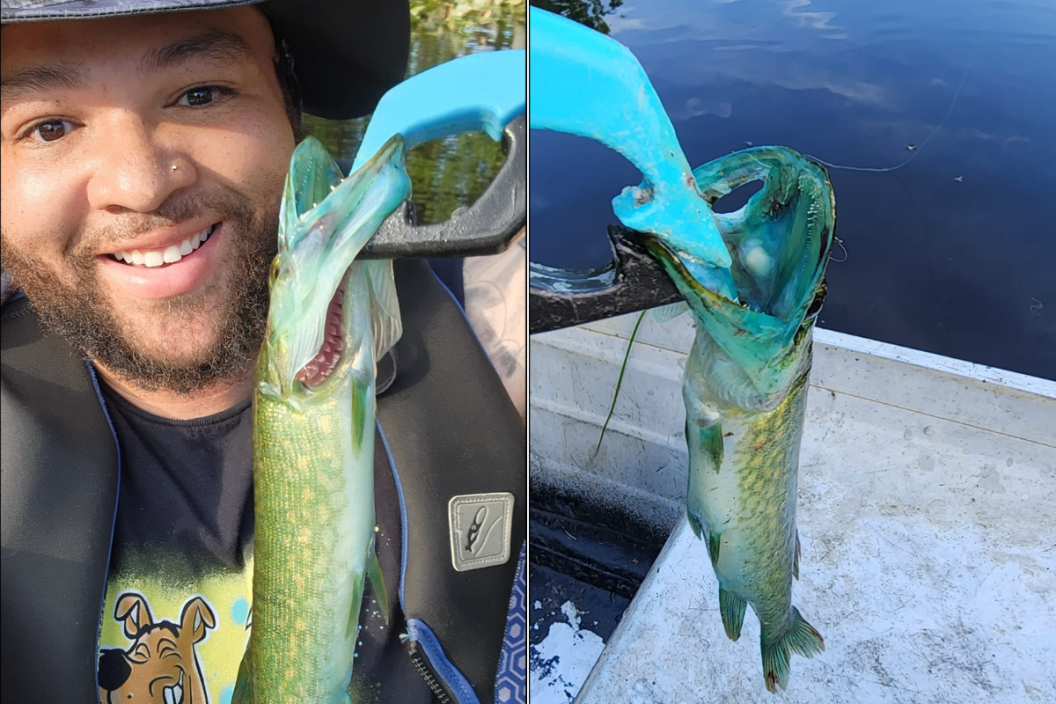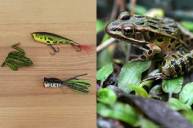A routine day at his favorite fishing hole led to a catch of a lifetime for John Byrd Jr. of Bowling Green, Virginia when he landed chain pickerel with a brilliant blue mouth. He'd been fishing the same pond at the private farm for decades, but he'd never seen anything like this before.
Byrd caught the 11 ½-inch chain pickerel in a 14-acre private pond in Caroline County on a Whooper Plopper lure. He decided to keep the pickerel and brought it to a taxidermist to have the unique fish mounted. But first, he contacted Scott Herrmann, a Virginia Department of Wildlife Resources (DWR) regional fisheries biologist.
Hermann explained that the fish had a "wild genetic pigment mutation", but was otherwise completely normal.
"The coloration expressed by the blue pickerel is extremely rare," Hermann said. "It pretty much falls into the one-in-a-lifetime category of catches." He went on the explain that the normal coloration of pickerels is green, which comes from a yellow pigment in the fish's skin, a color that is widely found in nature. Blue-mouthed pickerel have a rare genetic mutation that interferes with their ability to produce yellow pigments, and without the yellow to mix with blue and give the fish its usual green color, their skin tissue is instead a vibrant blue. Animals that are blue in color because they are unable to produce yellow pigment are called xanthic. The mutation shows more commonly up in frogs, snakes, and lizards.
While extremely rare (one study estimated that only 0.2 percent of chain pickerel have the xanthic mutation), there have been other reports of people catching them. An angler caught one from Loch Raven Reservoir in Maryland in 2014, and there have been some unconfirmed landings posted in fishing forums.
Chain pickerel are a species of freshwater fish that are in the pike family. They're found throughout the eastern United States and are common in rivers and streams, as well as reservoirs and impoundments. They have a long slim body, and its typical coloration is yellowish to greenish side, with a chain-like pattern of black lines down its sides.




